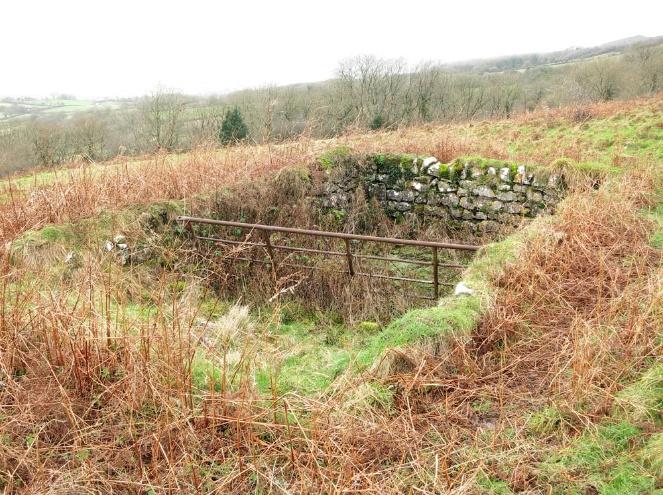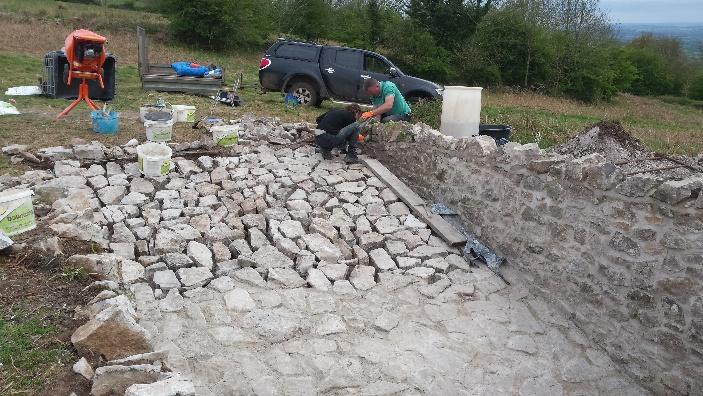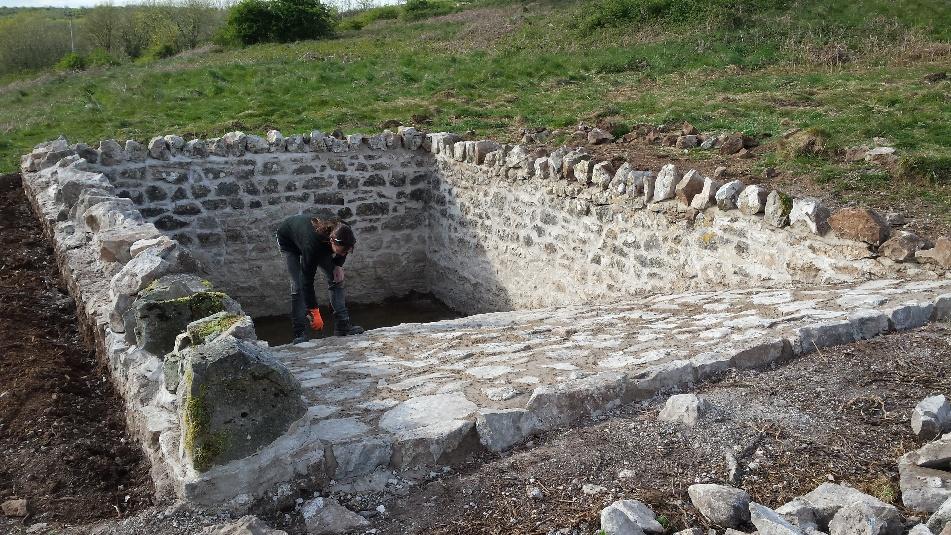The Mendip Ponds Project began in 2014 when volunteers from the Reptile and Amphibian Group for Somerset (RAGS) surveyed all the ponds across a 23km2 swathe of the Mendip Hills AONB to ascertain the status of great crested newts within the area.
Using maps dating from 1888 to present day a total of 121 ponds were identified within the area. However, on closer inspection 54 of these no longer existed, broadly in line with the national proportion of pond loss, leaving 68 ponds available for survey.
The ponds on the Mendip Hills are unusual. Being a limestone karst region, standing water is rare so during the land enclosures of the 18th and 19th centuries each enclosure had to be equipped with a pond to water livestock. Consequently, during this time characteristic small stone-built ponds proliferated across the hills, only to become obsolete in the 1950s when water troughs supplied by mains water were installed. Since this time, many have been filled in, but those that remain suffer from chronic neglect, many having been subsequently used as rubbish tips or simply left to fill with silt and rock as the stone structures deteriorated and collapsed.
Of the 55 ponds surveyed by RAGS 34 were found to be in poor or very poor condition, unable to provide any habitat for amphibians, while a further 13 were in a reasonable condition and only 8 were in good condition. A total of just 13 were found to be occupied by crested newts.
The distribution of the species across the area was a cause for concern. The accepted dispersal distance of great crested newts from one pond to another is approximately 500m and any pond located beyond this distance from any neighbouring ponds is considered to be isolated, leaving its amphibian inhabitants vulnerable to local extinction in the absence of any immigration or emigration.
Great crested newts were found to be distributed in three small pockets within the area, each isolated from one another, with one assemblage dependent on just a single breeding pond, a particularly precarious position.
The aim of the project was to restore ponds, carefully selected by their geographical location, to create a network of ‘stepping stones’ enabling the species to expand across the landscape and reconnect these disparate populations to increase available habitat and ensure gene flow across the entire population. Not all of the available ponds were located where they could contribute to the network, some were themselves far distant from any neighbouring ponds, but 46 ponds were identified which, once restored, would create a coherent network and achieve our aim.
Restoring these historically significant ponds is an expensive business when stonework repairs are necessary. Not all ponds required restoration of the stonework, in some
cases the ponds simply needed digging out, a task undertaken at no financial cost by RAGS volunteers, and once refilled with water they could provide acceptable habitat for amphibians. But many required extensive rebuilding and repointing using the original methods and materials to retain their historical integrity.
Restoration of the network began in 2016 with a grant of £50,000 from the Heritage Lottery Fund enabling us to restore all those ponds on public access land, but many of the ponds were located on privately owned agricultural land, requiring further fund raising.
To date over £100,000 has been raised and the network of habitable ponds across the project area is now complete. All the ponds are surveyed by RAGS volunteers each spring, during the peak survey season, and the expansion of great crested newts documented. Currently 14 of the restored ponds have been colonized enabling resumed interaction between two of the original populations of newts, while the infrastructure is now in place to enable further expansion over time, to reconnect the remaining population, thus securing the persistence of the species in the region.
Given the enthusiasm of the RAGS volunteer group and the skills developed during this project we have expanded our horizons and have recently been restoring ponds adjacent to the original area and outside of the remit of the project which it is hoped, will eventually reconnect further disparate groups of crested newts beyond the bounds of the original project, increasing the available habitat across the Mendip Hills.
This has been the most ambitious project RAGS has attempted, spanning a decade so far, and has not been accomplished in isolation. Huge gratitude is due to the RAGS volunteer group, the core source of effort preparing the ponds for rebuilding, and to Tina Bath, whose rare skills in the use of lime putties and lime mortar has enabled the sensitive rebuilding works. Digging out these ponds, all done by hand, and repairing crumbling stonework is arduous and time-consuming work and only the enthusiasm of these people has enabled the project to progress. However, other organisations have also provided practical assistance such as ‘Osprey Outdoors’, providing work experience for the disadvantaged, Somerset Wildlife Trust and the Mendip Hills AONB service.
Additionally, gratitude is due to the various organisations that have provided funding for the rebuilding of the ponds, including the National Lottery Heritage Fund, DEFRA, through the Farming in Protected Landscapes Scheme, The Mendip Society, Wessex Water, ARG-UK and Tesco.
Before restoration

During restoration

After restoration

